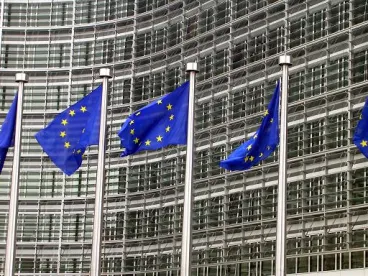EDPB says that cookie walls require a tracking-free alternative (not necessarily free of charge) – and the German Federal Supreme Court rules against opt-out consent for tracking cookies under German law
Introduction
In 2019, various EU member states issued guidance as to whether opt-in consent is necessary for non-essential cookies, with some guidance suggesting opt-in consent was required and other guidance noting it was unnecessary – at least in certain situations. As a result, some organizations struggle to understand the steps they must take to ensure their use of non-essential cookies (i.e., cookies and similar tracking technologies that are not strictly necessary for a website to function in the way the site visitor reasonably expects) complies with the applicable law. In May 2020 the European Data Protection Board (EDPB) and the German Federal Supreme Court provided further clarification on this topic.
On May 28, the German Federal Supreme Court held that opt-out consent for cookies used for the creation of user profiles for advertising purposes will not be considered effective. Relying on the European Court of Justice’s October 2019 Planet49 decision that a pre-ticked box would not constitute valid consent under the General Data Protection Regulation (GDPR), the German Court ended any future reliance on a provision in the German Telemedia Act, which was largely interpreted as allowing for opt-out consent.
EDPB Consent-Related Questions
Earlier In May, the EDPB adopted ‘Guidelines 05/2020 on consent under Regulation 2016/679’, updating its earlier-approved guidelines and providing practical guidance in relation to what constitutes proper consent. These Guidelines offer some clarity as to satisfying consent standards when users access website services.
The EDPB identified the need for clarification on the following two questions:
- Is it possible for an individual to validly consent when confronted with a so-called “cookie wall”?
- Can valid consent be expressed by simply continuing to browse / use the website?
While the EDPB answered both questions in the negative, there are exceptions to this strict interpretation.
ePrivacy and Standards of Consent
The need for consent for the use of non-essential website cookies derives from the so-called “ePrivacy Directive.” The Directive, which each EU Member State has implemented into national law, sets forth that storing or accessing information on a user’s equipment is only allowed on the condition that the user receives sufficient notice and provides consent to such activity.
The standard of “consent” needed for ePrivacy purposes is the same as is required by the GDPR’s definition of consent, meaning it must be a freely given, specific, informed, and unambiguous indication of a data subject’s intent to agree by a statement or clear affirmative action to that effect. It is the data controller’s responsibility to be able to demonstrate that consent was validly gained, and failure to prove valid consent can result in fines. Since May 2018, when the GDPR started to be enforced, non-compliant cookie consent is of greater concern to organizations since the potential fines under the GDPR far exceed those previously faced by organizations under member states ePrivacy laws.
KEY EDPB FINDINGS
Consent Is Not Freely Given with Cookie Walls
In the Guidelines, the EDPB expressly states that with “cookie walls” – the practice whereby access to a website’s content is blocked and made conditional on the user consenting to the storing/accessing of cookies on the user’s browser – consent is not truly freely given and therefore is not valid (Guidelines at para. 39).
The EDPB’s opinion on cookie walls is limited in the following two ways:
- First, it does not apply to cookies for which consent is not required (e.g., those which are strictly necessary for the provision of the service).
- Second, it only applies if there is no other option to access content behind the cookie wall – meaning a data subject cannot access the information on that specific website in any other way unless the data subject provides consent. The EDPB acknowledges that consent may be valid if and as long as the same organization offers two genuinely equivalent services, allowing the user to choose between the one which processes personal data for additional purposes (while requiring the user’s consent), and the other, available without such additional processing (without requiring consent).
This could be interpreted to mean that cookie walls may be acceptable if a paid but tracking-free version of the service is offered. This view is expressly supported by the German Federal Data Protection Supervisor in his comment to the Guidelines, in which he suggested that “privacy-friendly alternatives” to all-or-nothing consent approaches may avoid violation of the GDPR.
Continued Browsing Does Not Constitute Consent
The EDPB also notes that a data subject’s mere continued browsing is not enough to constitute consent because whereas physical motions may be explicitly determined to signify consent, merely continuing the ordinary use of a website does not, since such actions are difficult to distinguish (Guidelines at para. 86).
What may be enough, as the Spanish data protection authority elaborated in its guidelines on cookies, is to attribute a meaning to specific positive user actions if such interpretation is unambiguously and clearly explained to the user beforehand (e.g., if you send us an email or if you click on specific content of our website, this may be deemed consent to our use of tracking tools).
It should, however, be noted that withdrawal of consent should in any case (i) be possible without detriment for the user (e.g., a service downgrade), and (ii) be as easy to effectuate as it was to provide consent.
Refreshed Consent Required
Whereas the law does not specify the duration for which a data subject’s consent will last, the EDPB requires that consent should be refreshed in “appropriate intervals” in light of the context, the scope of the original consent, and the expectations of the data subject (Guidelines at para. 110).
Demonstrating Valid Consent
When designing processes for obtaining consent, organizations should consider their accountability obligations in demonstrating compliance with the requirements under the GDPR. In the online context, the EDPB points out that organizations should consider retaining:
-
information on the session in which consent was expressed together with documentation of the consent workflow at the time; and
- a copy of the information presented to the user.
Final Note
Although the Guidelines are not binding, the Guidelines and the German ruling will enhance the uniform interpretation of consent for ePrivacy and GDPR purposes. Grey areas remain and may be addressed in future rulings and with the eventual adoption of an ePrivacy Regulation, which currently continues working through the EU legislative process.






 />i
/>i

